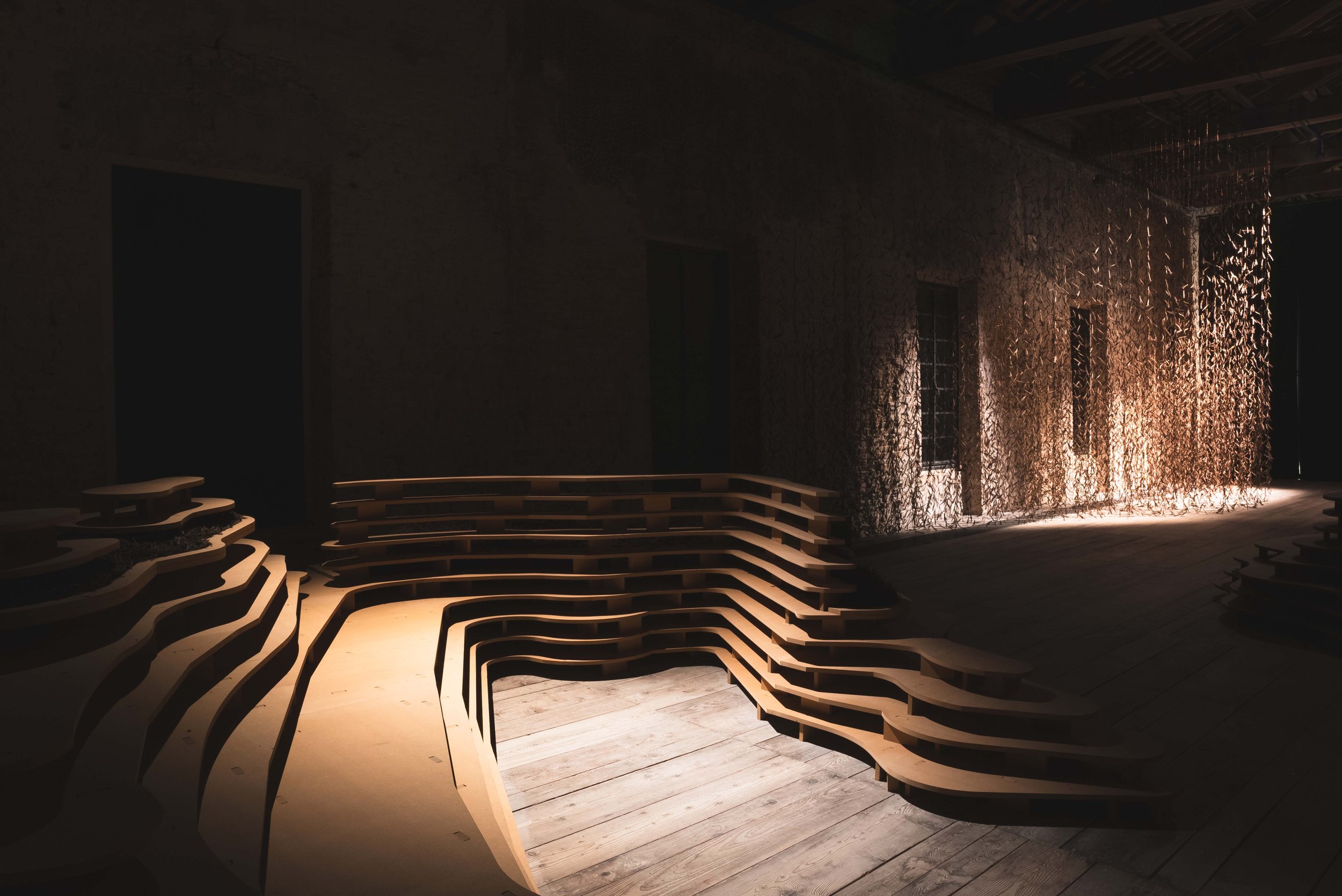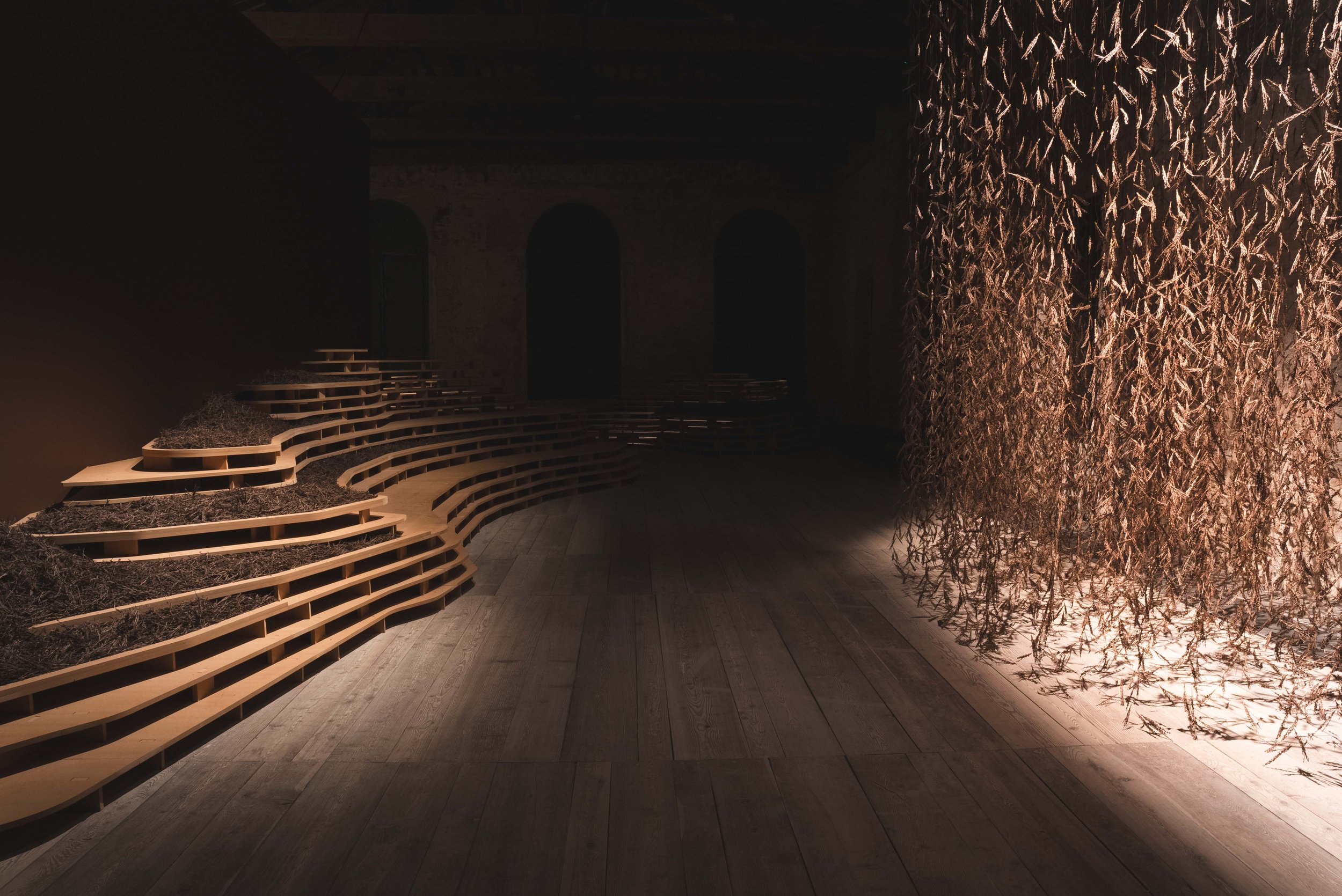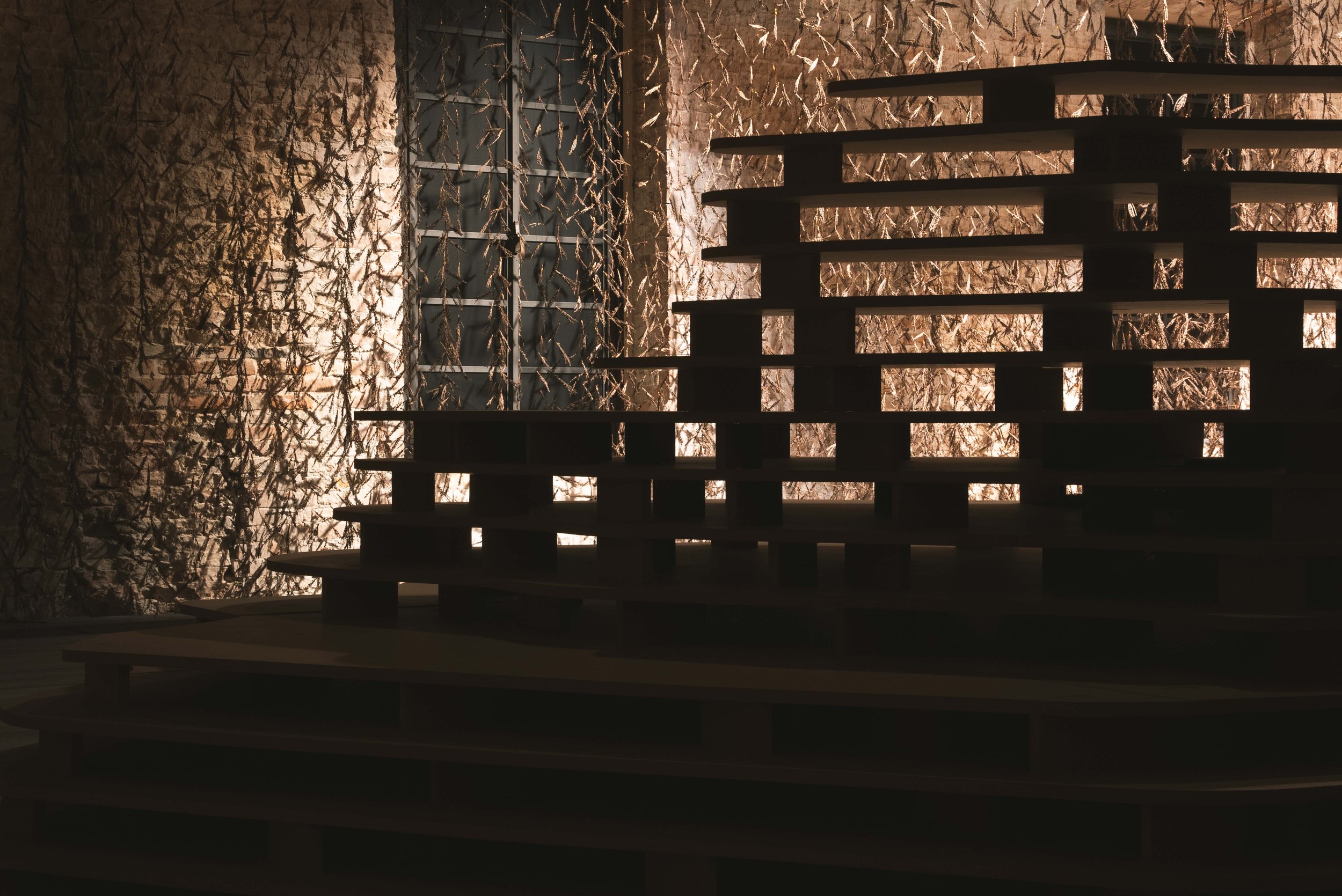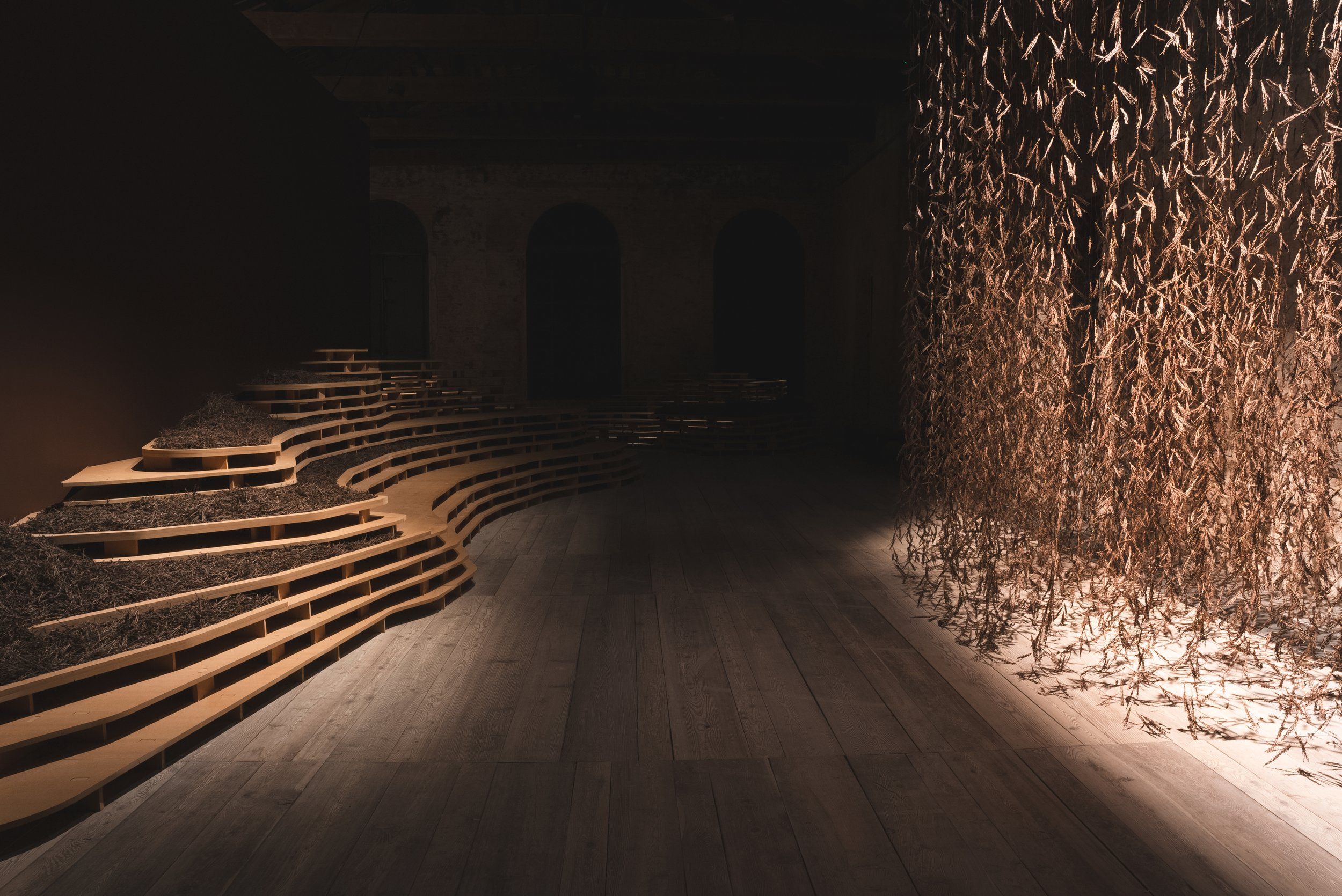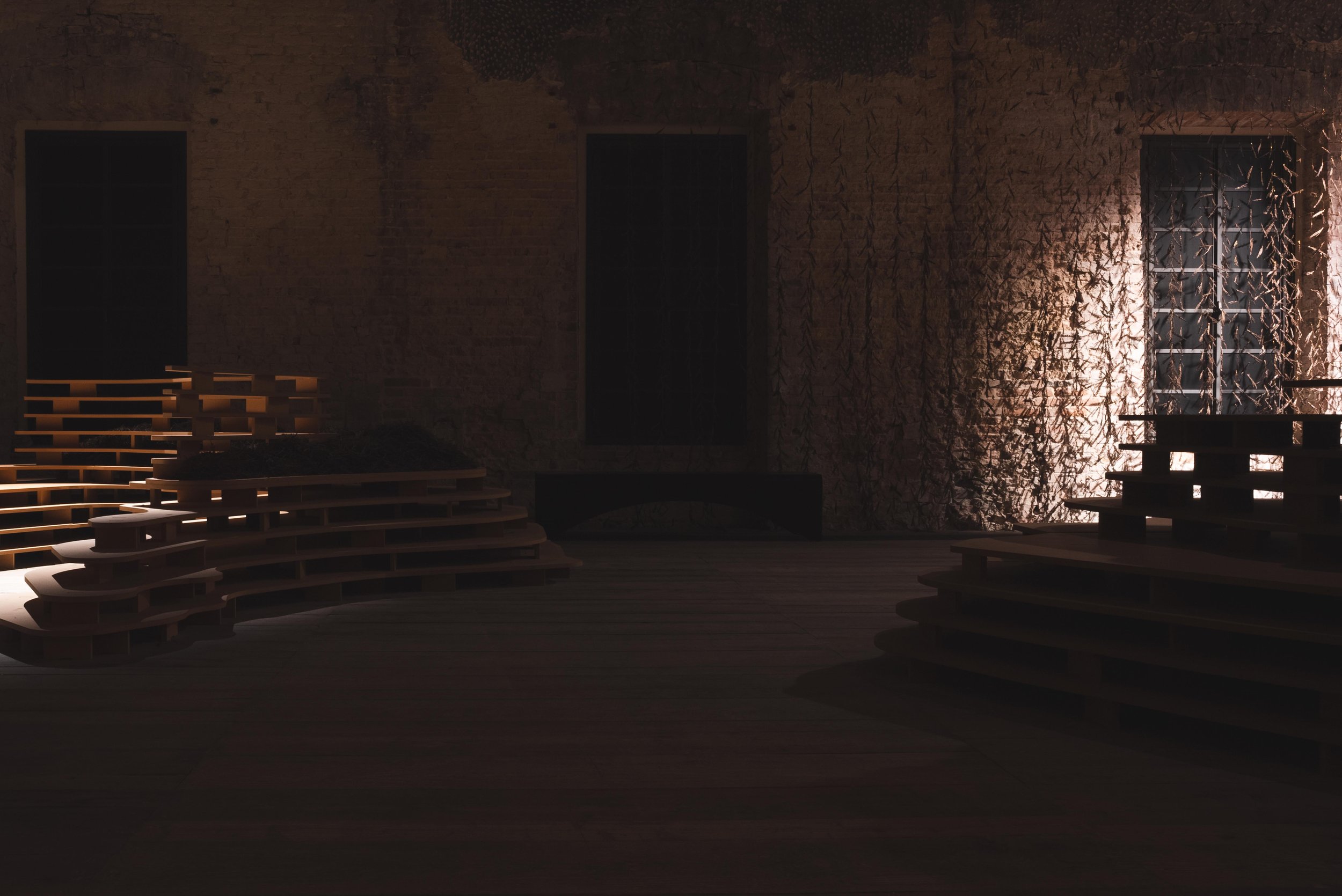Dinokana
Dinokana is the result of 7 years of research in the northern part of South Africa, on histories of land work, traditional infrastructures of land repair and their connections to repair of society more broadly. It takes as its point of departure, the histories of Bahuruste and Bakoni and their experiences of cycles of displacement and return. These peoples – and their sites of rebuilding and land-based rehabilitation – serve as markers for navigating psycho-social repair through the land, for contemporary South Africa and beyond. Dinokana features references to learnings about historical infrastructures of recovery and traditional water technologies used to rebuild the villages and communities of Bahurutse and Bakoni.
Rain in the semi-arid context of South Africa, and indigenous technologies of its calling and dispersal, are fundamental to historical and contemporary strategies for making life. Dinokana references long-held spiritual connections to water and land, and generationally inherited modes for its manifestation. In these traditions, land and rain are in themselves, indistinguishable from one another and their combined power holds its own subjectivity. Drawing on knowledges developed from historical and contemporary black life, Dinokana explores ways of repairing our relationships to land and rain – but also of ourselves – after cycles of loss and forced disinheritance.
The central piece of the Dinokana installation is a 20 minute long, 8-channel sound composition that foregrounds the power and place of rain and water in traditional South African society. Working from historical archive of songs of rain and harvest, the sound piece brings together field recordings of the natural landscape, interviews with generations of land workers, healers and family memory – framed within the structure of a Johannesburg thunderstorm. The sound piece is held within a constructed landscape, referencing the terraced hillsides of Bokoni and a rain-scape made up of resurrection plant clippings. The ‘resurrection plant’ (uvukakwabafile in isiZulu, umazifisi in isiNdebele or Myrothamnus flabellifolius) is characterised by its use in African medicine and traditional cultures but also by its representation of the potency of rain in repair and regeneration in Southern African life.
Dinokana installation views. Photographs: Jamal Nxedlana, Bubblegum Club
PRESS TO PLAY: Sound excerpt from Dinokana (2024)


